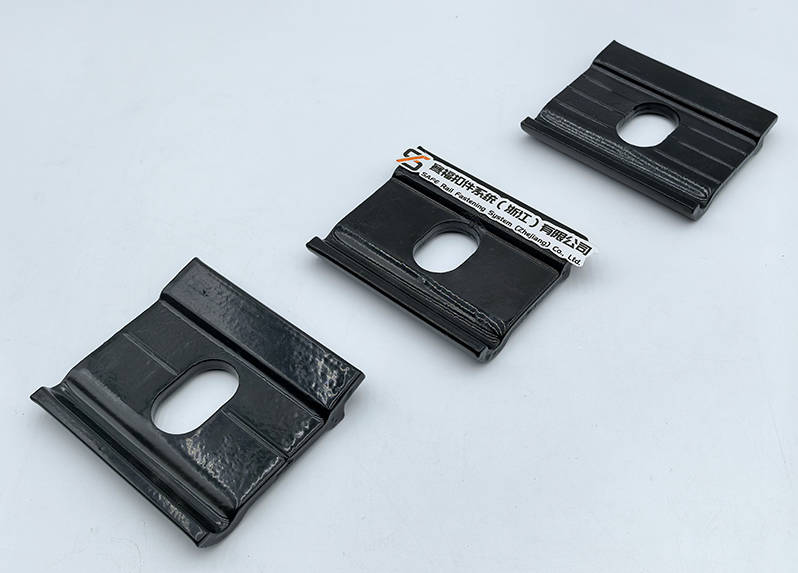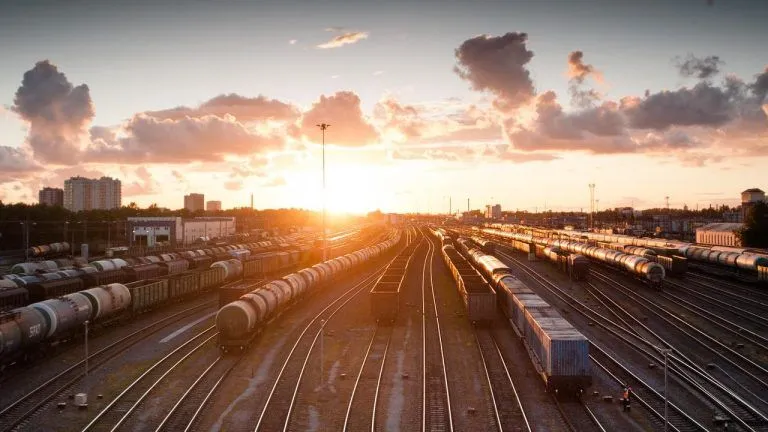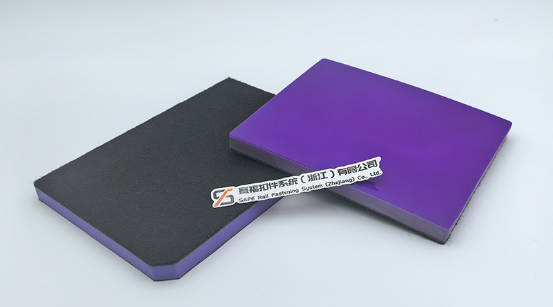Every component of a railway track, such as rails, sleepers, and fastening systems, plays a role in smooth and safe train operation. Among all these components, the Rail Gauge Baffle is a small but critical component with an immediate impact on the structural integrity of the track and the safety of train operation.

SAFE is a company specializing in the production of high-performance rail fastening systems and products, including Rail Gauge Baffles, that are robust to endure the tough environment of conventional, high-speed, and heavy-haul rail systems around the world. In this article, we outline precisely what a Rail Gauge Baffle is, how it is mounted in the rail infrastructure, and most importantly, its main functions, highlighting how SAFE products improve railway safety and efficiency.
What is a Rail Gauge Baffle?
Definition and Overview
A Rail Gauge Baffle is an engineering device installed within railroad tracks to ensure there is the appropriate distance between two rails of a railroad, known as the track gauge. The distance is significant since minute differences result in instability, excessive wear, or derailment. At SAFE, our Rail Gauge Baffles are designed to withstand high loads and environmental stresses and can be installed in all types of rail systems, including high-speed, metro, intercity, and heavy-haul railways. Having our SAFE’s Rail Gauge Baffle as part of your track infrastructure means operators get improved lateral stability, maintained rail gauge, and reduced maintenance. These baffles are usually part of a comprehensive rail fastening system, which may include clips, pads, and baseplates, which together retain the rails firmly in position under running loading.
Key Components and Materials
SAFE Rail Gauge Baffles are produced from cast iron, cast steel, alloy steel, and other composite materials with enhanced durability and fatigue resistance. Key features include:
- High-precision-engineered dimensions to provide a precise track gauge under dynamic loading.
- Strengthened surfaces to absorb lateral wheel forces.
- Compatibility with other SAFE’s fastening systems, such as Type I Fastening System and WJ-7 Fastening System.
We utilize international railway standards for manufacturing our baffles to ensure long-term performance in poor weather conditions, i.e., heavy rain, high heat, or frost.

Performance in Railway Systems
Track Gauge Maintenance
The rail gauge needs to be maintained at a constant distance apart, one of the key roles of a Rail Gauge Baffle. This gap, or gauge, also must be held within close tolerances. Even small variations can result in compromised train stability, with potential derailments or excessive wheel and rail wear. SAFE Rail Gauge Baffles also interface naturally with rail fastening systems to provide gauge accuracy. For example, in our WJ-8 Fastening System, the baffle works in conjunction with resilient clips and baseplates to hold the rails in place. This connection is especially important in high-speed rail, where even minimal differences in gauge can lead to very severe safety risks.
Absorbing Lateral Forces
Rails undergo constant lateral forces due to train wheels, particularly when running on curves or at high speeds. Baffles are introduced to provide a cushion that absorbs the lateral forces and spreads them to avoid misalignment of rails. SAFE baffles are geometrical structures that can resist deformation. During heavy-haul railway operations, for instance, in the Fenghong and Jingshen Railway project, our superior baffles withstood severe lateral loads without affecting track integrity and endured the most severe conditions.
Compatibility with Fastening Systems
Rail Gauge Baffles are not standalone items; they are part of a comprehensive fastening system. We produce our baffles at SAFE so that they will be fully compatible with our Fastening Systems, which include:
- Clips to fix rails onto sleepers.
- Baseplates offer a firm foundation.
- Rubber pads for damping vibration and reducing wear.
This synergy enables all the components to harmonize and provide total track stability, eliminating rail movement, noise reduction, and reducing maintenance cycles.

Installation and Maintenance
Good Installation Practices
A Rail Gauge Baffle installation should be exact and follow the manufacturer’s directions. At SAFE, we recommend the following:
- Install the baffle between rails according to the specified track gauge.
- Secure it with appropriate fasteners, ensuring clips and baseplates are oriented.
- Perform a visual and dimensional check for gauge accuracy.
With SAFE Rail Gauge Baffles, there is easy alignment and a snug fit, with minimal opportunity for installation errors that compromise safety.
Inspection and Maintenance
Regular inspection is required to provide sustained track performance. Inspection points include:
- Visual inspections for cracking, corrosion, or distortion.
- Gauge measurement to maintain spacing within tolerance.
- Integrity of fasteners to ensure clips and baseplates are firmly fastened.
SAFE products are built to be long-lasting, yet regular inspection and timely replacement on a scheduled basis, particularly in high-stress areas such as curves and heavy-haul lines, must be done to ensure long-term safety.
Benefits of Using SAFE Rail Gauge Baffles
Enhanced Safety
The first benefit of using SAFE Rail Gauge Baffles is enhanced railway safety. By ensuring correct gauge and damping out lateral forces, the baffles prevent derailments and rail misalignment, which gives smooth train movement.
Cost Savings
SAFE baffles are designed to endure. They are engineered with advanced high-strength technology that reduces rail and rolling stock wear, with the consequence of less maintenance and less downtime. For example, in the Wuhan-Huangshi Intercity Railway Project, our products promoted long-term efficient operation and reduced downtime.
Compliance and Standards
All of the SAFE Rail Gauge Baffles are designed to international railway standards of performance and quality. Our products are subjected to rigorous tests, ranging from material strength to environmental resistance, to make sure that they will satisfy the needs of today’s railway operators.
Common Problems and Troubleshooting
Signs of Wear or Damage
Rail Gauge Baffles will wear out over time. Typical signs are:
- Cracking or fracturing of the baffles.
- Distortion due to excessive lateral loads.
- Misalignment of track gauge.
Solutions and SAFE Solutions
SAFE recommends immediate replacement of the compromised baffles with authentic SAFE Rail Gauge Baffle parts. Our technical team provides installation tips and troubleshooting support to aid in the restoration of track integrity quickly.
FAQ
Q: What does a Rail Gauge Baffle do?
A: A Rail Gauge Baffle ensures proper rail spacing, withstands lateral forces of incoming trains, and prevents derailment, thus providing safe movement of trains.
Q: Where is the Rail Gauge Baffle installed?
A: Between the rails of the rail fastening system, typically by the sleepers and fixed to clips in a way that the stability of the gauge is maintained.
Q: How often should Rail Gauge Baffles be checked?
A: Periodically, typically as part of normal cycles of track maintenance, for wear, cracking, or misalignment.
Q: Can SAFE Rail Gauge Baffles be installed for any trains?
A: Yes, SAFE Rail Gauge Baffles are manufactured for different types of trains, such as high-speed, commuter, and freight trains, according to international railway standards.
Q: What is the material used to make SAFE Rail Gauge Baffles?
A: They are constructed using high-strength steel or alloyed materials that are robust and capable of carrying heavy loads and withstanding adverse weather conditions.




